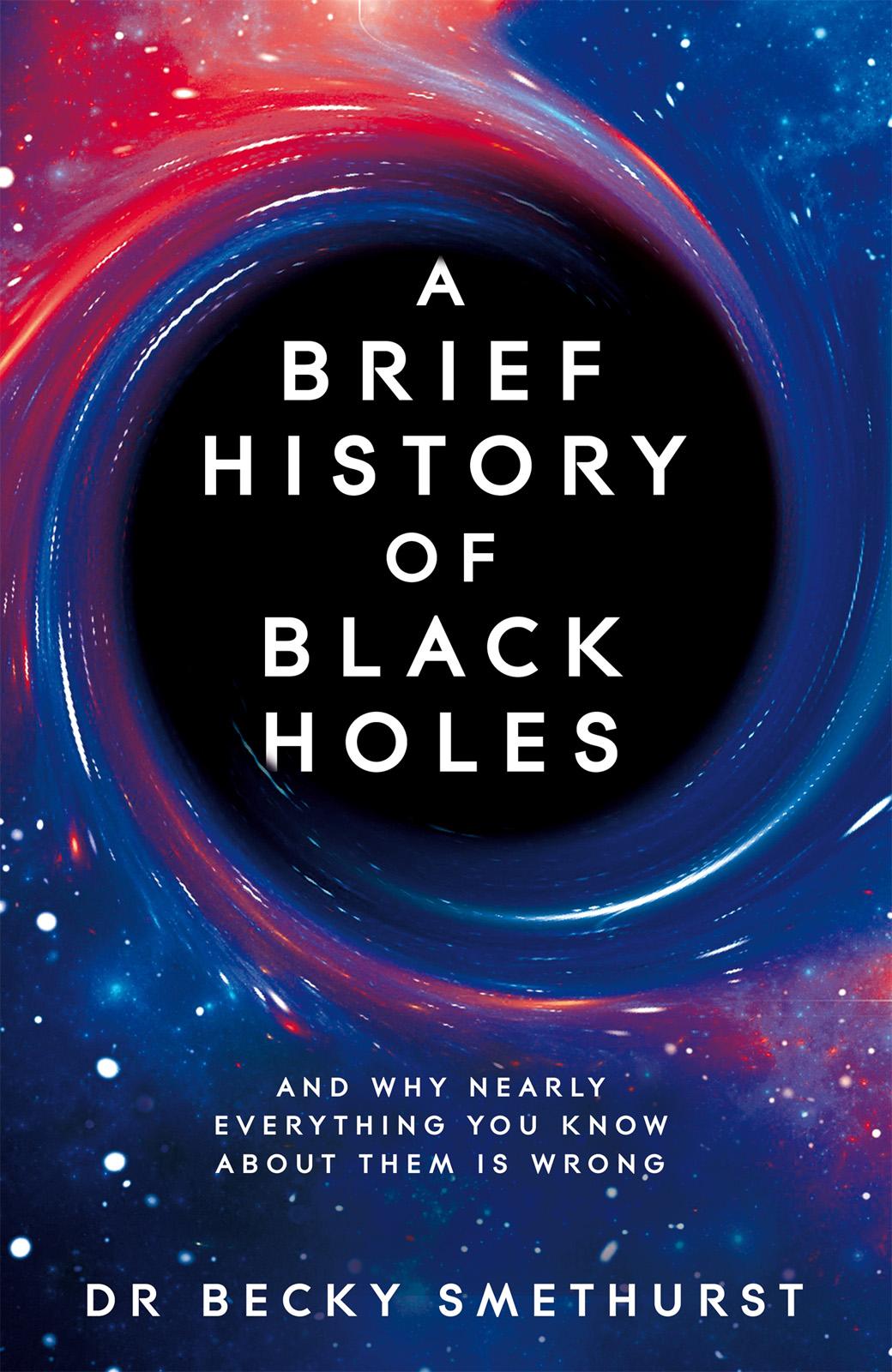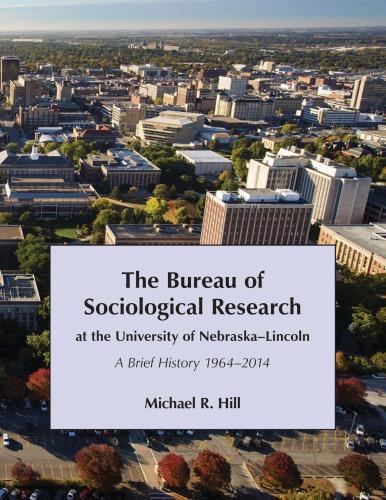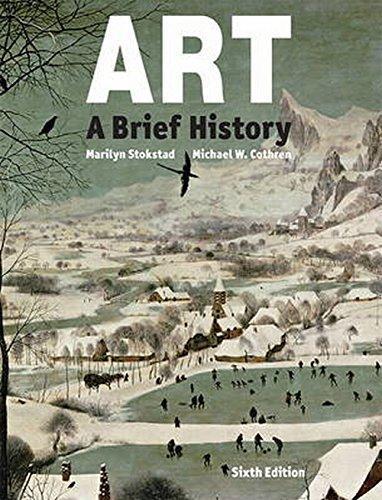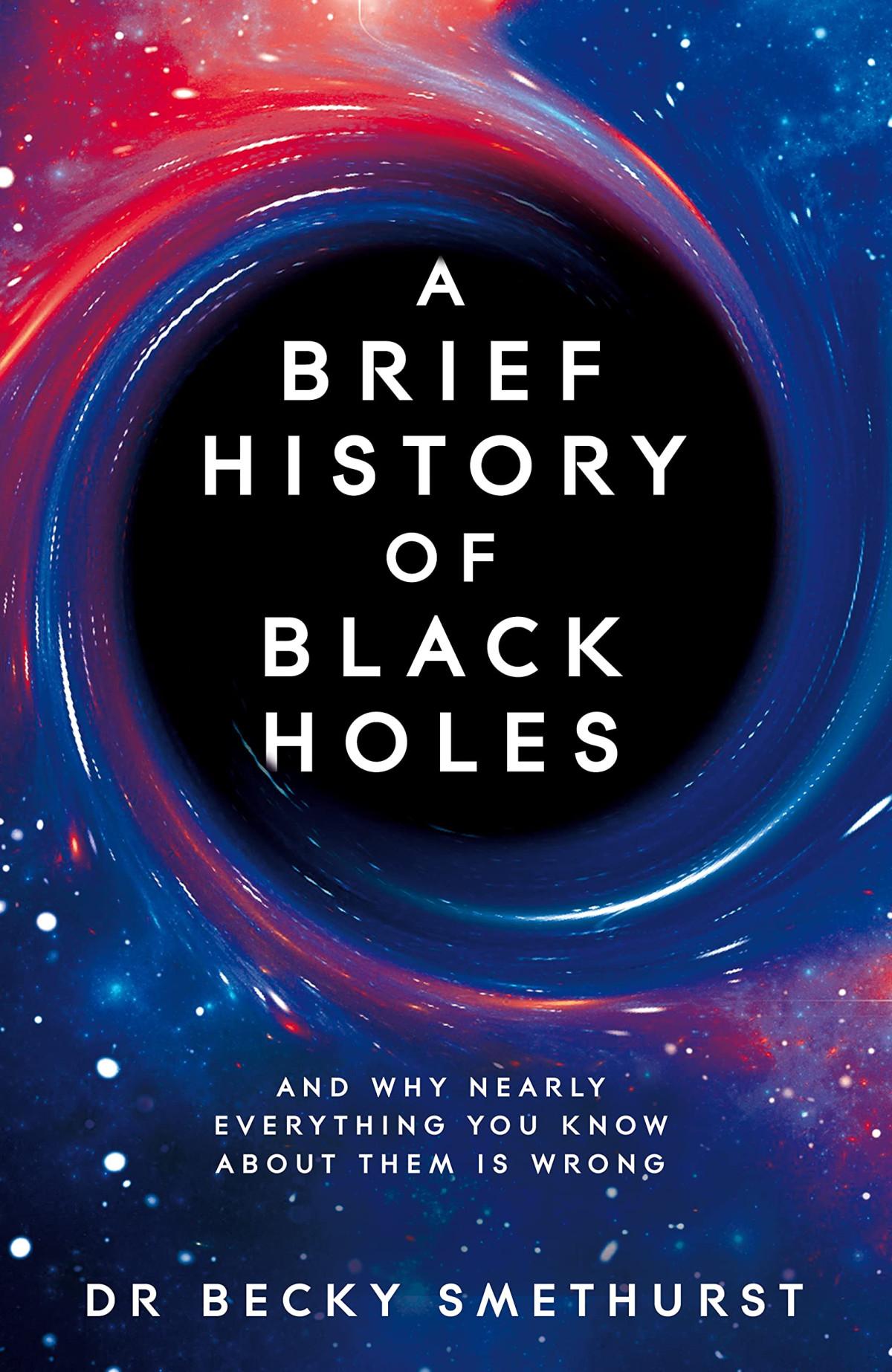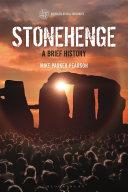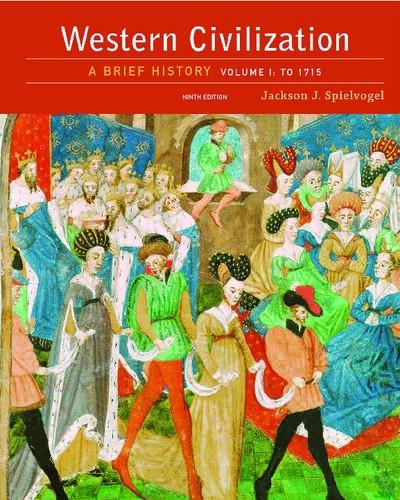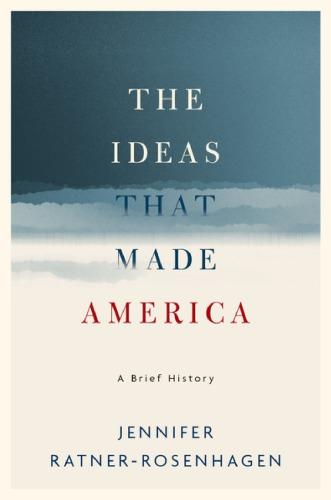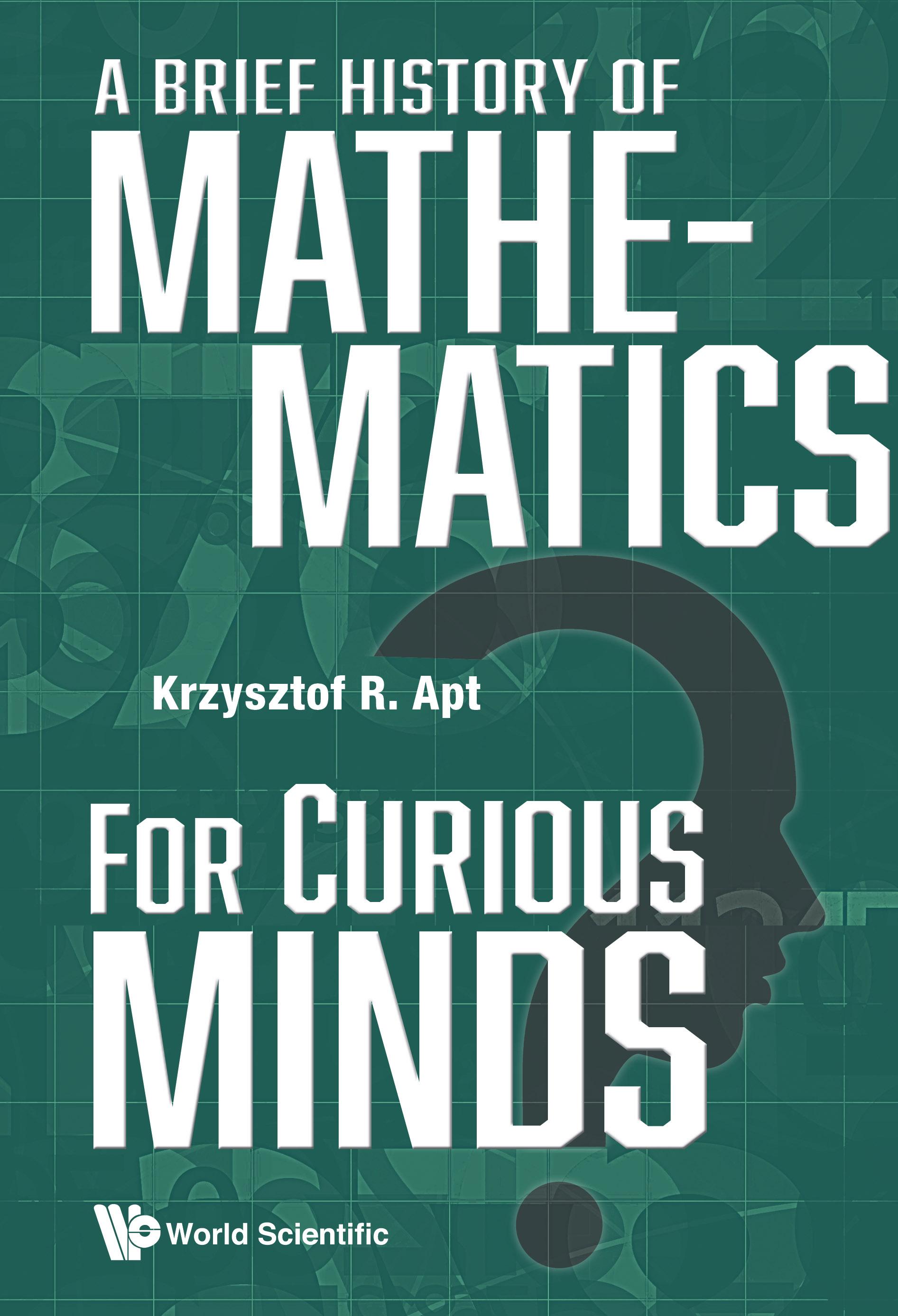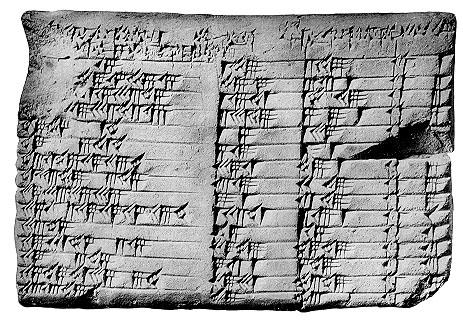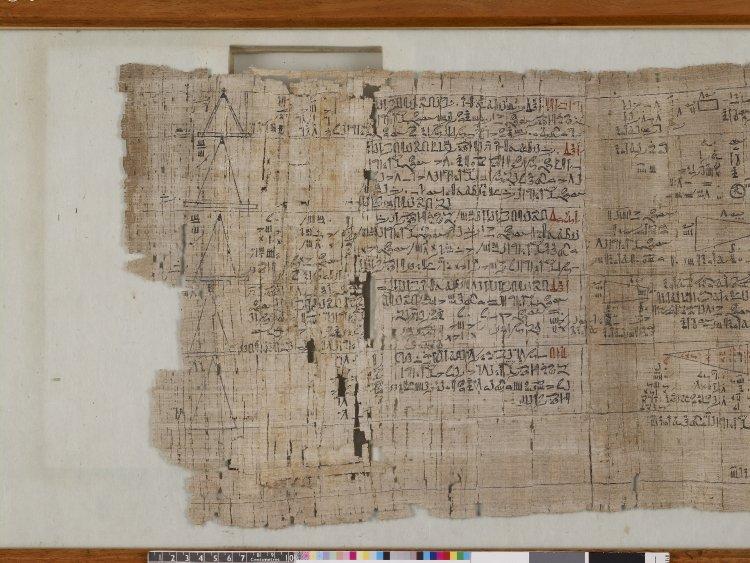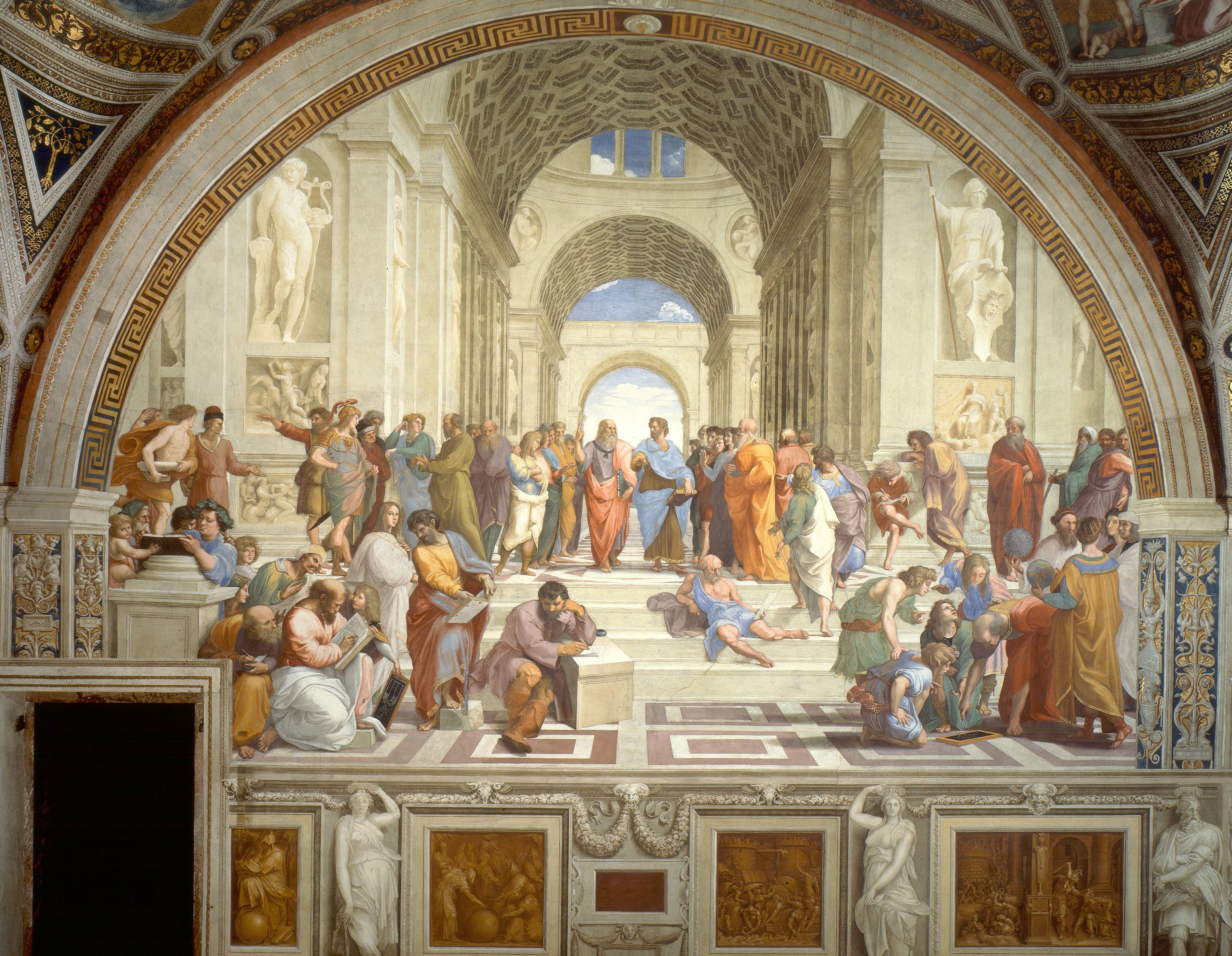A Brief History of Mathematics for Curious Minds Krzysztof R Apt Visit to download the full and correct content document: https://ebookmass.com/product/a-brief-history-of-mathematics-for-curious-minds-krzy sztof-r-apt/
More products digital (pdf, epub, mobi) instant download maybe you interests ...
A Brief History of Black Holes Dr Becky Smethurst https://ebookmass.com/product/a-brief-history-of-black-holes-drbecky-smethurst/
The Bureau of Sociological Research at the University of Nebraska–Lincoln: A Brief History 1964–2014 Michael R. Hill
https://ebookmass.com/product/the-bureau-of-sociologicalresearch-at-the-university-of-nebraska-lincoln-a-briefhistory-1964-2014-michael-r-hill/
Art: A Brief History (6th Edition ) 6th Edition https://ebookmass.com/product/art-a-brief-history-6thedition-6th-edition/
BRIEF HISTORY OF BLACK HOLES Dr Rebecca. Smethurst
https://ebookmass.com/product/brief-history-of-black-holes-drrebecca-smethurst/
Stonehenge: A Brief History 1st Edition Mike Parker
Pearson
https://ebookmass.com/product/stonehenge-a-brief-history-1stedition-mike-parker-pearson/
Western Civilization: A Brief History Ninth Edition
Jackson J. Spielvogel
https://ebookmass.com/product/western-civilization-a-briefhistory-ninth-edition-jackson-j-spielvogel/
The ideas that made America: a brief history RatnerRosenhagen
https://ebookmass.com/product/the-ideas-that-made-america-abrief-history-ratner-rosenhagen/
Mathematics and Its History (Undergraduate Texts in Mathematics) 3rd ed .
https://ebookmass.com/product/mathematics-and-its-historyundergraduate-texts-in-mathematics-3rd-ed/
American Government: A Brief Introduction (Brief Fifteenth Edition ) Brief
https://ebookmass.com/product/american-government-a-briefintroduction-brief-fifteenth-edition-brief/
A Brief History of Mathematics for Curious Minds This page intentionally left blank
A Brief History of Mathematics for Curious Minds Krzysztof R. Apt Centrum Wiskunde & Informatica (CWI), Amsterdam, The Netherlands
MIMUW, University of Warsaw, Poland
Published by
World Scientific Publishing Co. Pte. Ltd.
5 Toh Tuck Link, Singapore 596224
USA office: 27 Warren Street, Suite 401-402, Hackensack, NJ 07601
UK office: 57 Shelton Street, Covent Garden, London WC2H 9HE
Library of Congress Cataloging-in-Publication Data
Names: Apt, Krzysztof R., 1949– author.
Title: A brief history of mathematics for curious minds / Krzysztof R. Apt, Centrum Wiskunde & Informatica (CWI), Amsterdam, The Netherlands, MIMUW, University of Warsaw, Poland.
Description: New Jersey : World Scientific, [2024] | Includes bibliographical references and index.
Identifiers: LCCN 2023034145 | ISBN 9789811280443 (hardcover) | ISBN 9789811281495 (paperback) | ISBN 9789811280450 (ebook for institutions) | ISBN 9789811280467 (ebook for individuals)
Subjects: LCSH: Mathematics--History--Popular works.
Classification: LCC QA21 .A65 2024 | DDC 510.9--dc23/eng/20231016
LC record available at https://lccn.loc.gov/2023034145
British Library Cataloguing-in-Publication Data
A catalogue record for this book is available from the British Library.
Copyright © 2024 by World Scientific Publishing Co. Pte. Ltd.
All rights reserved. This book, or parts thereof, may not be reproduced in any form or by any means, electronic or mechanical, including photocopying, recording or any information storage and retrieval system now known or to be invented, without written permission from the publisher.
For photocopying of material in this volume, please pay a copying fee through the Copyright Clearance Center, Inc., 222 Rosewood Drive, Danvers, MA 01923, USA. In this case permission to photocopy is not required from the publisher.
For any available supplementary material, please visit https://www.worldscientific.com/worldscibooks/10.1142/13518#t=suppl
Printed in Singapore
ToEzraApt,wishinghimahappylife
This page intentionally left blank
Preface Mathematicsispartofourculturalheritage,justashowphilosophy,art,history,andgreatworksofliteratureare.Yet,evenwithalampinbroaddaylight, onecanhardlyfindanintellectualwhowouldbeabletosayanythingmeaningfulabouttheachievementsofmathematicians,letaloneawell-educated person.Mosthistorytextbooksdevotehardlyanyattentiontomathematics andmathematicians.1
Iwouldliketoofferhereashortandaccessibleaccountofthehistoryof mathematics,writtenforanintelligentlayman,hopingthatitwillallowhimor hertobetterappreciateitsbeauty,relevance,andplaceinhistory.And,asyou willsee,thecastofcharactersisatleastasfascinatingasthatofphilosophers orwriters.
Itisnaturaltoassumethatmathematicsoriginatedbecauseoftheneedfor counting.Moreambitioustasks,suchasthedeterminationofdistancesand areas,andalsooftaxes,required calculating.Soonafterorperhapsatthesame time,mathematicswasusedtodealwithmorechallengingproblemsposedby astronomyandphysics.DuringtheRenaissance,mathematicswasalready appliedinoptics,mechanics,geography,cartography,andeveninpainting (intheconceptofperspective).Astimewenton,moreandmoreusesfor mathematicswerefound.Forinstance,asearlyas1762,insurancecompanies startedtousemathematicsindeterminingtheirpremiums.2
Sincethen,mathematicshascontributedtoprogressinalmostallsciences,includingpsychology(statisticalanalysis),sociology(networkanalysis), medicine(e.g.,geometryandcalculusareusedinCTscantechnologyandin virology),chemistry(e.g.,graphtheory),crystallography(algebra),economics (e.g.,calculusandgametheory),politicalscience(votingtheory),meteorology (dynamicalsystems),biology(e.g.,calculus),computerscience(e.g.,mathematicallogic,combinatorics),linguistics(e.g.,formalgrammars),geosciences
(Fourieranalysisandwaveletanalysis),andevenhistory(radiocarbondating useslogarithms).SomemathematicianswonfortheirworksNobelPrizesin physics,economics,andmedicine.
Therearetwocompetingwaysoftellingthestoryofmathematics.Oneis throughachronologicalaccount,introducingmathematicianswhosuccessively enterthehalloffame.Theotheristodiscusstheareasofmathematicsand thenotionstheyfocuson.Ideally,toreconcilebothapproachesabookshould nothavethecustomarylinearformbutinsteadconsistofagridformedby theentries(mathematician/area)combiningbothapproaches.Butthen,the outcomewouldbeahandbookinsteadofabook.
Ichosethechronologicalapproachhere,though,inmyenthusiasm,Ioccasionallyjumpforward,pursuingtheimpactofanidea.Indoingso,Imay beguiltyoftoomanydigressions,buthopefully,theywillallowthereaderto appreciatetheboldnessofsomeoftheearlyachievements.
Itisnoteasytoprovideanaccessibleaccountofthehistoryofmathematics, foratleasttworeasons.Oneisthatmathematicsisavastsubjectthatis continuouslygrowing.Thismakesitdifficulttowriteaboutitinacompetent way.Theotheristhatstartingfromthe16thcentury,weenteraperiodin whichmathematiciansintroducemoreandmoretechnicalconcepts.Injargon usedbymathematicians,‘technical’usuallymeans‘difficulttoexplain’.
Suchconcepts,tomentionafew,includefunctions,relations,operations, real(numbers),complex(numbers),groups,rings,fields,filters,kernels,lattices,grids,spaces,modules,orders,matrices,faces,graphs,trees,interpretations,transformations,andmodels.Alltheseconcepts,justlikeadjectives, e.g.,ideal,rational,irrational,open,closed,dense,sparse,cardinal,anddiscrete,havecompletelydifferentmeaningsoutsideofmathematics.Inparticular,themathematicalconceptofcommutinghasnothingtodowithtraveling andtreesinmathematicsmaybeinfiniteandusuallygrowdownwards.
Otherconceptssuchasline,induction,dimension,vector,probability,tautology,continuous(change),orlimitseemtomeanthesamebothwithinand outsideofmathematics,butmathematicsoffersprecisedefinitionsofthem, which,incidentally,haveoftenbeenbornoutofcenturiesoflongstruggles, discussions,andoccasionalanimosities.
Acaseapartistheconceptofinfinity,whichhasbeentroublingmathematicians(andphilosophers)sincethetimeoftheGreeks.In1784,theBerlin Academyofferedaprizefora“clearandprecisetheoryofwhatistheinfinitein mathematics”.Itwasnotsatisfiedwithanyoftheentries.3 Theproblemsassociatedwithinfinitycontinuedtobothermathematiciansofthe19thcentury andpromptedthemtosubstantiallyredefinethebasicnotionsofanimportant
Preface
branchofmathematics.Yet,in1925,DavidHilbert,aGermanmathematician, wrote:“Ifwepaycloseattention,wefindthattheliteratureofmathematicsis repletewithabsurditiesandinanities,whichcanusuallybeblamedontheinfinite.”Hefurtherwrote(italicsintheoriginal):“[ ] thedefinitiveclarification ofthe natureoftheinfinite hasbecomenecessary,notmerelyforthespecial interestsoftheindividualsciencesbutforthe honorofthehumanunderstandingitself.”4 Apparently,thishonorhasnotbeensavedyet—in2013,Scientific Americanrananarticle Disputeoverinfinitydividesmathematicians thatdiscussestwocompetingtheoriesofinfinitesetsoverwhichlogicianscurrently debate.5
Yetanotherdifficultyinpresentingthehistoryofmathematicstoaneducatedlaymanisthatthedrivingforcebehindmathematicsis generalization Overcenturies,mathematicianshavegeneralizedalmostallpossibleconcepts totheextenttheyevenoccasionallyquestiontheirusefulness.
Thesimplestexampleofageneralizationistheconceptofa number TheBabyloniansacceptednumberssuchas 1, 2, 3 ,aswellas unitfractions (forexample, 1 6 ).TheGreeksstudiedspecialnumbers,called prime numbers andalsobegrudginglyagreedtoadmit irrationalnumbers,suchas √2.TheChineseandIndiansintroducednegativenumbers,theusualfractions,andenricheduswiththenumberzero.Thiswayweobtained integers ..., 3, 2, 1, 0, 1, 2, 3,...,—andrealnumbers,(reals,forshort),e.g., 5 1 3 , √3, 0, 1 1 2 ,or √2
However,inthe16thcentury,outoftheworkdoneonsolvingthird-degree equations(forinstance, x3 15x 4=0),thereemerged complexnumbers,a conceptthatgoesbeyondsecondaryschoolmathematics.Thenwealsohave transcendentalnumbers, p-adicnumbers,and algebraicnumbers.Totopitoff GeorgCantorintroduced infinitenumbers (called cardinals,ashorthandfora cardinalnumber)inthelate19thcentury.Sointheend,theword‘number’ isalittlebitambiguousinmathematics,tosaytheleast.6
Inwhatfollowsbya number,Ishallusuallymean1,2,3,etc.;so,whatis calledinmathematicalparlancea naturalnumber.Anexcellentwaytolosethe readeristodelveintothenotionthatanaturalnumbershouldnotbetaken forgranted.SoofcourseIshallnotdothat.
Anyinformalaccountofthehistoryofmathematicsiseasilypronetocriticism.Mathematicianswillcomplainthatseveralimportantareasofmathematicsandmathematiciansarenotmentioned,whilea‘generalreader’willsoonbe lostifoneassumesfromhimorherknowledgeofmathematicsatthesecondary schoollevel.Tosolvethisdilemmaandtokeeptheaccountinformal,Imoved alltechnicalcommentsandreferencestofootnotes.Further, 32 appendices
x ABriefHistoryofMathematicsforCuriousMinds
providemoredetailedinformationandselectedproofs,somelessknownbutall atanelementarylevel.Finally,attheend,Ilistsomenovelsandfilmsabout mathematiciansandrecommendvariousbooksonthehistoryofmathematics thatcanbeofinteresttoa‘generalreader’.
Acknowledgments IwouldliketothankJoséMaríaAlmirawhoreadtheinitialmanuscriptand providedseveralusefulcommentsthatledtovariousimprovementsinthepresentation.IalsoprofitedfromseveralusefulsuggestionsmadebyAlmaApt, JanHeering,HelenaStockmann,NickTrefethen,RonalddeWolf,thelate MaartenvanEmden,andthethreeanonymousreferees.
Thisbookcouldnothavebeenwrittenwithoutaccesstothewonderful CWIlibrary.Iammostgratefultoitsstaff,inparticularitsdirectorVera Sarkol,andalsoRobvanRooijen,forhavingorderedseveralbooksonthe historyofmathematicsthatwerehighlyrelevant.Further,Iwouldliketo thankMagdalenaKyclerandPiotrSitekfortheirexpertproductionofseveral drawingsusingtheTikzpackage.MyspecialappreciationgoestoMs.LaiFun KwongofWorldScientificforamostefficientandsmoothcooperation,andto GregoryLeeforhisremarkablythoroughdeskcopyediting.
ThisbookissetusingthefbbLATEXpackagethatprovidesafreeBembo-like fontdesignedbyMichaelSharpe.
AllproceedsfromthisbookwillbedonatedtoAmnestyInternational.
Notes
1NotableexceptionsareD.J.Boorstin, TheDiscoverers:AHistoryofMan’sSearchto KnowHisWorldandHimself,Vintage,1985,andP.Watson, Ideas:AHistoryofThought andInvention,fromFiretoFreud,Weidenfeld&Nicholson,2005.
2K.Devlin, TheUnfinishedGame:Pascal,Fermat,andtheSeventeenth-CenturyLetter thatMadetheWorldModern,BasicBooks,2008.
3D.Bressoud, ARadicalApproachtoRealAnalysis,TheMathematicalAssociationof America,p.52,2007.
4D.Hilbert,OntheInfinite,in:J.vanHeijenoort, FromFregetoGödel,HarvardUniversity Press,pp.367–392,1967.
5N.Wolchover,Disputeoverinfinitydividesmathematicians, ScientificAmerican, 3December2013, https://www.scientificamerican.com/article/infinity-logiclaw/.Originallypublishedin QuantaMagazine.Forarecentbookonthesubject,see I.Stewart, Infinity:aVeryShortIntroduction,OxfordUniversityPress,2017.
6Considerthisremark:“Todayitisnolongerthateasytodecidewhatcountsasa ‘number’.”fromF.Q.Gouvêa,FromNumberstoNumberSystems,in:T.Gowers,I.Leader, andJ.Barrow-Green(eds.), ThePrincetonCompaniontoMathematics,PrincetonUniversity Press,pp.77–82,2008.
Appendices
1AproofofThales’theorem..................
3Thebrokenbambooproblem.................
4Irrationalityof √2 andtheproportionsoftheA4papersheet
5Threeproofsthatthereareinfinitelymanyprimenumbers.
6Eratosthenes’estimateoftheEarth’scircumference.....
7AproofofPtolemy’stheorem.................
8Al-Biruni’scomputationoftheradiusoftheEarth......
13Aconstructionofaregularpentagon.............
22CondorcetparadoxandBorda’scount............
Chapter1 FromtheBeginningsto 6thCenturyBCE Tallymarks Itmakessensetoassumethatthefirstinstanceofmathematicalactivitywas counting.Thereisevidencethateven birdsareabletodistinguishsmallnumbers,sayfourfromfive.Earlyhumans coulddobetter,ofcourse.
Inthe1970s,theso-called LebomboBone,ababoon’slegbonewith29 tallymarks,wasdiscoveredinSwaziland.Onespeculatesthatthisnumber hastodowiththefactthatittakestheMoon29daystocircletheEarth. Infact,thefirstcivilizationsusedalunarcalendar.TheLebomboBoneis theoldestknownmathematicalobject,estimatedtobeatleast43,000years old.Itsageexceedsthatofanapproximately30,000-year-oldwolfbonewith 55tallymarks,excavatedin1937intheCzechRepublic.Asmallattemptat organizingtheresultinginformationwasmadeasthemarksweredividedinto groupsof5.
Anotherbonewithtallymarks,approximately20,000yearsold,became,in somesense,aboneofcontention.Calledthe Ishangobone,itwasdiscovered in1950inwhatisnowtheDemocraticRepublicoftheCongo.Itcontains 168notchesarrangedindifferentpatternsinthreecolumns.Manytheories havebeenputforwardtoexplainthemeaningoftheusedarrangements.In particular,oneclaimsthatitrecordsdifferentphasesoftheMoon,whileanother claimsthatitconstitutesaprecursorofwriting.Determiningwhichtheoryis rightisdifficult,giventhelackofadditionalevidence.1
Still,inmodernterminology,thesebonesrepresentcountingin unarynotation astheyrelyonasinglesymbol,amark.Progresswasachievedby inventingnotationsthatcouldrelyonmoresymbols.
Babylonians
Twoancientculturessubstantiallycontributedtodeveloping mathematics.OneofthemwastheBabyloniancivilization,
namedafterthecityofBabyloninIraq.Itemergedaround2000BCE.The principalsourceofinformationonitisthecollectionofclaytablets.Afterthe scribeswroteonthem(fromlefttoright)thetabletsweredriedorbaked. Thisprocessensuredthatseveralsurviveduntiltoday.Thetabletsofgreatest mathematicalinterestwerewrittenintheperiod1800–1600BCE,inthetimes whentheextensivelawcodeofHammurabiwasestablished.
TheBabyloniansdevelopedanumbersystemthathad59differentsymbols forthenumbers1to59.Inmodernterminology,thisisasystemwithbase60 with0missing.Themotivationforsuchapeculiarchoiceisnotclear.Ithas beensuggestedthatitaroseasamergeroftwoothernumbersystems.
Babyloniannumerals.
TheabovelistingofBabyloniannumeralsshowsthatthesymbolsusedare notindependent:thoserepresentingnumberslargerthan10arepairsoftwo symbols.Forexample,thesymbolfor37is ����,whichisacombinationofthe symbolsfor30and7: �� and ��
Thiswayofcountingwithbase60hassurviveduntiltoday,asseenin ourdivisionofhoursinto60minutesandminutesinto60seconds.Also,our divisionofadayinto24hoursandacircleinto360degreesgoesbacktothe Babylonians.
TheBabyloniannumbersystemwas positional,whichmeansthatasymbol representsa different valuedependingonthepositionitstands.Largernumbers werewritteninthispositionalnotationusingtheabove59numerals,justlike wedoinourdecimalsystem.Spacingwasusedinsteadofthedigitzero,but this,ofcourse,couldcauseambiguities.2
In1854twotabletsfromabout2000BCEwerefoundthatcontainedsquares andcubesofnumbersupto59and32,respectively.Thisshowshowimpressive
thecalculatingskillsoftheBabylonianswere.Todividethenumbers,they realizedthat a b = a · 1 b ,whichbroughtthemtheideaofconstructingtables oftheunitfractions(i.e.,fractionsoftheform 1 b )andrecordingthemintheir base60arithmetic.3
Somecomplicationsarosewithfractionslike 1 7 ,whichcouldnotbewritten insuchaform.Ascribewasawareoftheproblem,admittingthat“anapproximationisgivensince7doesnotdivide”.4 Ofcourse,asimilarproblemarises inthedecimalnotation.
TheBabyloniansusedmathematicsforaccounting,trade,timerecording, astronomicobservations,andsurveyingpurposes.Preservedclaytabletsrecord solutionsofsimplemathematicalproblemsthatinvolveoneortwovariablesthat ledtowhatwecall linearequations.Hereisanexampleproblemfromatext foundduringexcavationsinIraqin1949; qa isaweightunit.5
Ifsomebodyasksyouthus:IfIaddtothetwo-thirdsofmytwothirdsahundredqaofbarley,theoriginalquantityissummedup. Howmuchistheoriginalquantity?6
However,nogeneralmethodswereproposed,andeachproblemwassolved individually.AnothertabletshowedthattheBabyloniansdeterminedthevalue of π,theratioofthecircumferenceofthecircleanditsdiameter,as 3 1 8 ,i.e., 3.125.OtherdiscoveredtabletsrevealedthattheBabylonianswerealsoableto solvespecific quadratic (i.e.,second-degree)equationsandevengaveatryat somespecific third-degree equations.Hereisanexampleofatypicalproblem thatledtoaquadraticequation:7
Thelengthofarectangleexceedsitswidthby7.Itsareais60. Finditslengthandwidth.8
AnotherimportantsourceconfirmingthesophisticationofBabylonian mathematicsis Plimpton322,asmallclaytabletmeasuring12.7centimeters by8.8centimeters(soitwouldfitintoanA6-sizedenvelope).Itwaspurchased in1922for $10byanAmericanpublisher,GeorgeArthurPlimpton,froman antiquarian.ItcomesfromIraqandisestimatedtohavebeenwrittenaround 1800BCE.In1945,twomathematiciansfoundoutthatthetabletprovided informationabout15so-calledPythagoreantriples,i.e.,thenumbers a, b,and c,suchthat a2 + b2 = c2 (forinstance3,4,and5,as 32 +42 =52).9
Egyptians EssentiallyinparallelwiththeBabylonians,theEgyptiancivilizationdeveloped.TheEgyptiansrecordedtheirwritingon papyriusinghieroglyphs.Theusualwritingdirectionwasfromrighttoleft.
ThePlimpton322tablet.10
OurknowledgeofEgyptianmathematicsstemsfromtwomanuscripts.Thefirst isthe RhindMathematicalPapyrus fromapproximately1650BCE.Itcontains materialcopiedfromanoriginalthatisabout200yearsolder.Thepapyrus waspurchasedin1858byaScottishantiquary,HenryRhind,andacquired afterhisdeathbytheBritishMuseuminLondon.Itisabout536centimeters by32centimeters,butwithsomepartsmissing.Byaremarkablecoincidence, someusefulmissingfragmentswerefoundhalfacenturylaterinthedeposits ofaNewYorkmuseum.
Thepapyrusisprobablytoday’sequivalentofamathematicstextbook.It includes84problemsconcernedwithdivisions,multiplication,andhandlingof fractions.Anexampleofaproblemtackledishowtodivide6loavesamong 10men.Theansweris 1 2 + 1 10 ,astheEgyptians,likeBabylonians,usedunit fractions(withthesingleexceptionof 2 3 )exclusively.Also,moreadvanced problemsweredealtwith;theseamountedtosolvinglinearequationsinone variable.Forinstance,anotherproblemcallsforfindingthesizeofascoop thatrequires 3 1 3 tripstoawelltofillone heqat (anancientEgyptianunitof volume).Inmodernterminology,thisissimplytheequation 3 1 3 x =1,with theanswer x = 3 10
11
TheRhindMathematicalPapyrus. Thepapyrusalsocontainsgeometryproblems.Inparticular,itprovideda methodofcalculating π,thevalueofwhichwasdeterminedas 256 81 ,i.e.,about 3.16.Oneoftheproblemscontainsthefollowingpuzzle:
Sevenhouseshavesevencatsthateacheatssevenmicethateach eatssevengrainsofbarley.Eachbarleygrainwouldhaveproduced sevenheqatsofgrain.
Thetaskistodeterminehowmanythingsaredescribed.Thisisclearlyan exerciseinaddingupconsecutivepowers:theansweris 7+72 +73 +74 +75 = 19, 607
So,thisisaprecursortothefollowingfamousEnglishriddlethatdates backtothe18thcentury(thoughtheanswerishere:justone):
AsIwasgoingtoSt.Ives, Imetamanwithsevenwives, Eachwifehadsevensacks, Eachsackhadsevencats, Eachcathadsevenkits:
Kits,cats,sacks,andwives, HowmanyweretheregoingtoSt.Ives?
Thesecondmanuscriptisthe MoscowMathematicalPapyrus,purchased inEgyptbyaRussianEgyptologistaround1892.Itisnowpartofacollection ofthePushkinStateMuseumofFineArtsinMoscow,henceitsname.The papyrusisabout5.5meterslongandbetween4and7centimeterswideandis approximatelyfrom1850BCE.
Itcontains25problemsconcernedwitharithmeticandthecomputationof areasandvolumes.Inparticular,itprovidesacorrectformulaforcomputingthe volumeofatruncatedpyramid,likeapyramid‘underconstruction’withthetop partmissing.ItisthemostremarkableachievementofEgyptianmathematics weknowof.
Torepresentnumbers,theEgyptiansemployedasystemthatuseddifferent symbolsforeachpowerof10,allthewayupto1,000,000:
Numberswerethenwrittenbyrepeatingthesesymbolstheappropriate numberoftimes,sometimesdisplayedinmorerows.Armedwiththisknowledge,thereadercaneasilydecipherinformationwrittenonsomeoldartifacts.
AfragmentofthemaceheadofKingNarmer.12
Forexample,in1898,amaceheadfromabout3100BCEwasfoundinEgypt thatbelongedtoKingNarmer.ItisondisplayintheAshmoleanMuseumin Oxford.Theaboverepresentationofitsfragmentshowsthenumber400,000 (thelowerpartunderthesignofanox)writtenas
(intwocolumns),thenumber1,422,000(underandnexttothesignofagoat) writtenas
andtotheright,thenumber120,000(underthesignofaprisoner(asitting manwithhisarmstiedbehindhisback))writtenas
ThismaceheadshowsthattheEgyptianswerealreadyusingtheirnumber systemmorethan5,000yearsago.
Finally,torepresentfractions,asystemeventuallyemergedaccordingto whichtheunitfraction 1 n waswrittenbyputtingthesymbol rover n Forexample, 1 15 waswrittenas
TheNileanditsfloodingswerecrucialfortheEgyptians.Consequently, theydevelopedasolarcalendarearlyontopredictthem.Iteventuallyreplaced alunarcalendar.Intheircalendar,ayearhad365daysandwasdividedinto 12monthsof30days,with5additionaldaysattheend.Duetothelackof leapyears,thecalendaryeardriftedfartherandfartherawayfromthesolar yearandafter1,460years,madeafullcircle,whichmusthavehappenedmore thanonce.ThisproblemwaseventuallyaddressedbyJuliusCaesarduringthe 1stcenturyBCE.
Notes
1G.G.Joseph, TheCrestofthePeacock:Non-EuropeanRootsofMathematics,Princeton UniversityPress,3rdedition,pp.33–35,2011.
2Forexample,62(so 1 601 +2)isrepresentedas ���� ,while3,602(so 1 602 +0 601 +2) isrepresentedby ����
3Anexamplemayhelptounderstandthisidea.Thedecimalnotationusesbase10,so thefraction 1 25 iswrittenas 0.04,since 1 25 = 0 10 + 4 102 .IntheBabylonians’approach,base 60isused,so 1 25 wasrecordedasthesequenceoftwonumerals�������� representing2and24, since 1 25 =2 · 1 60 +24 · 1 602
4J.J.O’ConnorandE.F.Robertson,AnoverviewofBabylonianmathematics, http: //www-history.mcs.st-and.ac.uk/HistTopics/Babylonian_mathematics.html,2000.
5G.G.Joseph,op.cit.,p.153.
6Itleadstoalinearequation 2 3 2 3 x +100= x,withthesolution x =180
7G.G.Joseph,op.cit.,p.154.
8Itcanbeformalizedbytheequations y = x +7 and xy =60.Theyleadtotheequation x(x +7)=60,whichexpandstothequadraticequation x2 +7x =60,withthesolution x =5
9V.J.KatzandK.H.Parshall, TamingtheUnknown:AHistoryofAlgebrafromAntiquity totheEarlyTwentiethCentury,PrincetonUniversityPress,2014.
10Courtesy:PublicDomain,WikipediaCommons.
11Courtesy:PublicDomain,WikipediaCommons.
12Courtesy:PublicDomain,WikipediaCommons.
Chapter2 TheGreeks (From6thCenturyBCEto 5thCenturyCE) AncientGreekmathematicscoversaperiodofmorethan1,200years.Atthat time,therewasnodivisionofscienceintodisciplines.So,mathematicianswere oftenalsophilosophers,astronomers,orengineers,whoappliedtheirmathematicalknowledgeandideastothesedisciplines.But—crucially—theyalso studiedmathematicsforitsownsake.Theirfocuswasonnumbertheory, geometry,logic,and,occasionally,algebra.Thisbroughtthemtoastudyof problemsthatwentfarbeyondtheneedsofdailylife.Severaloftheirresults hadnodirectuse,but,asweshallsoonsee,blamingmathematiciansfortheir lackofconcernwithapplicationscanbeshortsighted.
Thalesandtrigonometry WebeginouraccountofGreekmathematics with ThalesofMiletus (c.625–545BCE), asuccessfuloilmerchantandoneofthewisemenofhistimes.Thalesis consideredthetraditional‘fatherofphilosophy’;hebelievedthatinnature, everythingoriginatesfromwater.Hecanalsobeviewedasthe‘fatherof trigonometry’,theareaofmathematicsconcernedwiththestudyoftriangles. Studentsinsecondaryschoolslearnthe Thales’theorem,whichisconcerned withatriangleinscribedinacircle.ThistheoremisdiscussedinAppendix 1
Thaleswasabrilliantastronomer(inparticular,heapparentlypredicteda solareclipse)andamathematicianwhowasabletocomputetheheightofthe pyramidsandthedistanceofshipsatseafromtheshore.
Trigonometrygaveriseto triangulation,amethodofcreatingprecisemaps byconstructingsuccessivetriangles.Itwasinventedinthe16thcenturybya Dutchmathematician, GemmaFrisius (1508–1555).Sixtyyearslater,another Dutchman, WillebrordSnelvanRoyen (1580–1626),betterknownas WillebrordSnellius,vastlyimproveduponitbyproposingtomeasuretheangles insteadofthesidesofthetriangles.1 Inspiteofthisimprovement,producing
thefirstprecisemapsofcountriesorcontinentswasnotatriflingmatter.For instance,inthe18thcenturyittooktheItalian-FrenchCassinifamilysome50 yearstoproducethefirstreliablemapofFrance.2
PythagorasandthePythagoreanTheorem
AcontemporaryofThales, PythagorasofSamos (c.570–c.500BCE),iscreditedwiththefamous Pythagoreantheorem.It statesthatinaright-angledtriangle,withthesidelengths a,b,and c,where c isthelengthofthehypotenuse,wehave a2 + b2 = c2.Pythagoraswasso delightedwiththisdiscoverythatheapparently“offeredahundredoxentothe Muses”tothankfortheinspiration.3
ThealreadydiscussedPlimpton322 tabletseemstoindicatethatspecific casesofthisresultwerealreadyknown totheBabylonians.Also,theEgyptiansknewthatatrianglewithsides3, 4,and5wasright-angled.Theproof ofthePythagoreantheoremisgivenin Euclid’s Elements,abookfromaround the3rdcenturyBCE,whichIshalldiscussshortly.However,Euclid’sproofis notsostraightforward.
OneofthesimplestproofswaspublishedinashortarticlebyanAmerican President,JamesAbramGarfield,who wasinofficeforonly199days—hedied in1881afterbeingshotbyanassassin.HisproofispresentedinAppendix 2.Garfieldconcludedhisarticlewiththisremark:“Wethinkitsomethingon whichthemembersofbothhousescanunitewithoutdistinctionofparty.”4
Pythagoreantheorem:
Bynow,thereareplentyofproofsofthePythagoreantheorem.Already, in1940,acollectionofnolessthan370proofsappeared.5 Newproofskeep appearing.In2016,aWorldBankeconomistKaushikBasupublishedoneina papersuccinctlytitled AnewandratherlongproofofthePythagorastheorem bywayofapropositiononisoscelestriangles 6
PythagorasisconsideredtobethefirstpersonwhoconcludedthattheEarth wasasphere,asopposedtoaflatcirculardisc,aswasbelievedamongothers likeHomer.AsstatedbyBertrandRussell:“Pythagoras[...]wasintellectually oneofthemostimportantmenthateverlived,bothwhenhewaswiseand whenhewasunwise.[...]Hefoundedareligion,ofwhichthemaintenets
werethetransmigrationofsoulsandthesinfulnessofeatingbeans.”7 Butthe schoolhefoundedinsouthernItalywasalsoconcernedwithphilosophyand mathematics.
Oneofthesymbolsusedbytheschoolwasthe pentagram,afive-pointed starformedbydrawingthediagonalsofa regularpentagon 8 ThePythagoreanswerefascinatedbynumbersandbelievedthattheuniversecouldbefully understoodintheirterms.Apparently,amottooftheirschoolwas“Allis number”.9
Theyrealizedthatthesumsofsuccessiveoddnumbersformconsecutive squares,so 1+3=22 , 1+3+5=32 , 1+3+5+7=42,andsoon.The Pythagoreansalsoinventedtheconcept ofa perfectnumber.Thesearethe numbersthatareequaltothesumof theirproperdivisors.Forexample,6 isperfectsince1+2+3=6andsois 28,since1+2+4+7+14=28.They attributedmysticalpropertiestothese perfectnumbers.Thisideapersisted forsometime.Forexample,duringthe 5thcentury,St.Augustineclaimedthat Godcreatedtheworldin6daysbecause 6isaperfectnumber.Perfectnumbers giverisetooneoftheoldestopenproblemsinmathematics:areallperfect numberseven?Alsoitisnotknownwhetherthereareinfinitelymanyperfect numbers.
Apentagram.
ThePythagoreansalsoattachedimportancetomusicanddiscoveredthat musicalintervalsbetweennotescouldbeexpressedasnumbers.Inparticular, Pythagorasdiscoveredthathalvingthelengthofastringwouldproduceatone exactlyanoctavehigherwhenstruckorplucked.
π andsomeotherirrationalnumbers ThePythagoreanswerefamiliar withfractionslike 1 3 or 2 5 ,but, totheirhorror,theydiscoveredthatothernumbersexistedaswell.They found,forexample,thatthediagonalofasquarewhosesizesare1couldn’tbe expressedasafraction.Nowadayswewritethisnumberas √2 andcallitthe ‘squarerootof2’.
Wehappentoencounterthisnumberdaily:itistheratioofthesidesofan
ABriefHistoryofMathematicsforCuriousMinds
A4papersheet.Theratio √2 isnotaccidental;itensuresthatanA5paper sheet,obtainedbyfoldinganA4papersheetinhalfalongitslongeredge,has thesameproportionsastheoriginalA4papersheet.
Thisideaofusingtheratio √2 isrelativelyrecent: ItisduetoGermanphysicistGeorgChristophLichtenberg,whoproposeditonlyin1786.
Fractions,suchas 2 5 or 5 2 ,arenowadayscalled rationalnumbers,whilenumbersthatcannotbeexpressedasfractionsarecalled irrationalnumbers.So, √2 isanirrationalnumber.Asimpleproofisgivenin Appendix 4,whereitisalsoexplainedwhy √2 isthe ratioofthesidesoftheA4paper.
TheA4papersheet.
Anotherexampleofanirrationalnumberisthealreadydiscussed π.Itiscelebratedinmanyways,for instanceina1976poembyPolishpoetWisławaSzymborska,aNobelPrizelaureate,whichstartswith:
Theadmirablenumberpi: threepointonefourone. Allthefollowingdigitsarealsoinitial, fiveninetwobecauseitneverends.
In2009,inabidforstrongerscienceeducation,theUSHouseofRepresentativesapprovedaresolutiondesignating14March2009asNationalPiDay. (TheAmericanwayofwriting14Marchis3/14.)Sincethen,14Marchis internationallycelebratedasPiDay.
Computingthevalueof π hasfascinatedmathematicianseversinceantiquityandisarecurringthemethroughoutthehistoryofmathematics,oneto whichIshallreturnmorethanonce.TheGreekssubstantiallyimprovedupon theBabylonianandEgyptianestimates.Inthe3rdcenturyBCE,Archimedes useda96-gon(aregularpolygonwith96sides)toapproximatethecircumferenceofacircleandconcludedthat 3 10 71 <π< 3 10 70 ,i.e., 3.1408 <π < 3.1428 ... ,whichgivesacorrectapproximationtotwodecimalplaces.A substantiallybetterapproximation 355 113 wasfoundinthe5thcenturybyChinesemathematician ZuChongzhi andwasnotimproveduponforthenext900 years.Thiseasy-to-rememberfraction(thinkintermsofdividingthesequence ofsixdigits113355intotwoequalparts)yieldsacorrectapproximationof π tosixdecimalplaces,whichisthebestonecanachieveusingafractionwith sixdigits.
TheDutch-Germanmathematician LudolphvanCeulen (1540–1610)
spentamajorpartofhislifecalculating π to35decimalplaces.Hewas soproudofthisachievementthatheaskedtoengravethisapproximationon histombstone.(Thiswouldbeadifficultrequestforthemathematiciansresponsibleforthecurrentbest-knownapproximationof π,asitisgoesupto morethan100trillion(1014)decimalplaces.)ABritishamateurmathematician,WilliamShanks,wassomewhatlessfortunate.Inthe19thcentury,he spent15yearscalculating π to707decimalplaces,butaswaslaterdiscovered, madeamistakeatthe528thplace.Provingthat π isirrationalwasahardnut tocrackandwasestablishedonlyinthe18thcentury.10
AnotherirrationalnumberknowntotheGreekswasthe goldenratio.It appearsinmanynaturalconstructions.Forexample,asexplainedinAppendix 12,thisistheratioofthelengthsofadiagonalandasideinapentagram. Severalastonishingapplicationsofthegoldenratiowerefoundinmusic,nature, painting,andarchitecture,tonameafew.
Aristotleandthefoundationsoflogic
Oneofthetoweringfigures ofGreekhistorywas Aristotle (384–322BCE),ateacherofAlexandertheGreat.For20years,hewasa studentatPlato’sschool,the Academy,andlaterfoundedhisownschool, the Lyceum.Aristotlewroteonavastarrayofsubjects,inparticular,politics, ethics,andphysics.Hewasalsothefirsthistorianofphilosophy,providinga systematicaccountoftheworksofpreviousphilosophers.Someofhiswork canbeseenastheoriginsoflinguistics,thestudyofhumanlanguages.11 His maincontributiontomathematicswasinprovidingthefoundationsof logic.In hiswork PriorAnalytics,Aristotlearguedthatlogicalargumentsshouldbeconstructedusing syllogisms,inferencesthatallowonetoconcludenewstatements fromthealreadyestablishedones.Anexampleisthefamiliardeduction:
EveryGreekisahuman. Everyhumanismortal. Therefore,everyGreekismortal.
Aristotleproposed192syllogismsintotal,butthemoreknown
Allmenaremortal. Socratesisaman. Therefore,Socratesismortal.
isnotamongthem,sinceaccordingtohislogic,onecouldnotmakespecific statements(likeaboutSocrates).Thissyllogismseemstohavebeeninvented onlyintheHighMiddleAges,probablybyWilliamofOckham,a13th-century
Oxfordscholar(furtherdiscussedinChapter 4)knownforthe‘Ockham’sRazor’ principle,whocameupwith1,368newsyllogisms.12
AccordingtoAristotle,theonlywaytoattainvalidscientificknowledgeisby meansofalogicalargumentbasedonsyllogisms,startingwithtruestatements, whichareeither postulates thatholdforaparticularscienceor axioms that alwayshold.Thisapproachliesatthebasisofscientificreasoning.
Inthe3rdcenturyBCE,Aristotle’sapproachtologicwastakenfurtherby theStoics,whoadded connectives tologic,suchasconjunctionandnegation. Thisallowedthem,incontrasttoAristotle,tostudycomplexpropositions.The modusponens rule(fromtwopremises: A,and A implies B,infer B)isdue toStoics.Theirapproachtologiccanbeconsideredastheoriginofwhatis nowcalled propositionallogic.
Thisviewoflogicwastakenup2,000yearslaterbyGottfriedWilhelm Leibniz.Inturn,asIshallexplainlater,thereisadirect(thoughlengthy)path thatleadsfromLeibniztocomputers.So,inasense,weareallnowprofiting fromAristotle’sinsights.
Euclid’s Elements ThePythagoreantheoremisjustoneexampleofthe manytheoremsthatcanbefoundinthe Elements,a treatiseby Euclid (c.325–c.265BCE),aGreekmathematicianfromAlexandria,inwhichhecompiledallmathematicalknowledgeknowntotheGreeks atthattime.Itconsistsof13volumes(calledbooks)containing465theorems fromgeometryandnumbertheory.ItsEnglishtranslationexceeds500pages.13
The Elements areunbearablydryanddifficulttodigest.Soitissurprising thatitisoneofthemostinfluentialbooksinhistory.Also,almostnothingis knownaboutitsauthor.Thestoryofhowthe Elements becameavailableto ustellsalotabouttheconvolutedwaysofhumancivilization.Thebookwas translatedaround800fromGreekintoArabicinBaghdadbytheIslamicmathematicianal-HajjajibnMatar,duringtheperiodcalledtheIslamicGoldenAge. Then,around1120,anEnglishmonkcalledAdelardofBath,aphilosopherand akeentravelerthroughsouthernEurope,translateditfromArabicintoLatin. Some140yearslater,CampanusofNovara,anItalianmathematician,used Adelard’ssecondtranslationtoproduceanimprovedandannotatedversion. ThisversionwasfirstprintedinVenicein1482.Thefirsttranslationofthe Elements directlyfromGreekintoLatinwascarriedoutonlyin1505byan ItalianBartolomeoZamberti.Thisversionwas,inturn,translatedintoEnglish in1570bySirHenryBillingsley,thelaterlordmayorofLondon.Theoriginal versionsofthe Elements stillexist.Forexample,oneislocatedintheBodleian LibraryinOxford.14
Throughouttheagesthe Elements haveinspiredandinfluencedfamous artists,philosophers,scientists,andpoliticians.Euclid(togetherwithPythagoras,Socrates,Plato,Aristotle,andotherwell-knownGreekfigures)appears inthefamousRenaissancepainting, TheSchoolofAthens (1509–1510),by Raphael.Euclidisthepersonleaningforwardatthebottomrightofthepainting.
Thediscoveryofthe Elements bytheEnglishphilosopherThomasHobbes heavilyinfluencedhisthinkingandconvincedhimthatgeometrywasthekey tothestudyofnature.16 Dutchphilosopher’sBaruchSpinozamainwork, Ethics,waswritteninastyleinspiredbyEuclid’s Elements. 17 IsaacNewton, anuncommonlysolemnperson,apparentlylaughedwhenanassistantasked himwhatbenefittheremightbeinstudyingEuclid.18 BertrandRussellstarted tostudythe Elements atthetenderageof11,withhisbrotherashistutor. Hecommentedonit:“Thiswasoneofthegreateventsofmylife,asdazzling asfirstlove.Ihadnotimaginedthattherewasanythingsodeliciousinthe world.”19
Giventhelengthofthetreatise,itisnowonderthatPtolemy,therulerof
Euclidin TheSchoolofAthens. 15
Egypt,askedEuclidwhethertherewasaneasierwaytounderstandgeometry thanbystudyingthe Elements.Euclidapparentlyreplied:“Thereisnoroyal roadtogeometry.”20
Thefirstfourbooksofthe Elements discussgeometryandculminatein theconstructionofaregularpentagonthatbuildsuponallgeometryresults establishedsofar.RobinHartshornewroteaboutitinhisguidedreadingofthe Elements:“Ifthereissuchathingasbeautyinamathematicalproof,Ibelieve thatthisproofofEuclid’sfortheconstructionoftheregularpentagonsets thestandardforabeautifulproof.”21 InAppendix 13,Iprovideaparticularly simpleconstructionfoundinthe19thcentury.
TheGreeksheldgeometryinhighesteem.Platohadthesaying“Letnobody ignorantofgeometryenterhere”inscribedovertheentrancetohisschool.In TheRepublic,heoutlinedacurriculumcalledthe quadrivium thatconsistedof fourstudies:arithmetic,geometry,astronomy,andmusic.Itwaswidelyused intheMiddleAges.
Inanotherbook, Timaeus,Platointroducedfive Platonicsolids,whichare regularandconvexpolyhedra(defined asthree-dimensionalobjectsenclosed byidenticalflatfaces,theverticesof whichlieonasphere).Inthe13th (andfinal)bookofthe Elements,itwas provedthatnootherPlatonicsolidsexist.AproofcanbefoundinAppendix 21
Thisstrikingresultwasdescribedby HermannWeyl,aprominentGerman mathematicianofthe20thcentury,as “oneofthemostbeautifulandsingular discoveriesinthewholehistoryofmathematics”.23
Platonicsolids.22
Euclidattemptedtoderiveallhistheoremsaboutgeometryfromashort listofintuitivepostulatesandaxioms,likethestatements“allrightanglesare equal”or“thewholeisgreaterthanthepart”.Itwasnoticedonlyattheend ofthe19thcenturythathedidnotcompletelysucceedsinceheoverlooked someunstatedassumptions.24
OneofEuclid’saxioms,the5thone,states(inan equivalent,modernform)thatonaplane,givena straightlineandapointnotlyingonit,onecandrawthroughthepoint
Euclid’s5thaxiom exactlyonestraightlineparalleltothegivenline,asinthefollowingdrawing:
The5thaxiomofEuclideangeometry.
Overthecenturies,mathematicianstriedinvaintoderivethisaxiomfrom theotherEuclideanaxioms.Thematter,asweshallseelater,wasonlyclarified inthe19thcentury,whichgaveriseto non-Euclideangeometry,ofwhicha variantwasusedinthe20thcenturyinEinstein’sgeneralrelativitytheory.
Primenumbers The Elements alsocontainsseveralimportantresults aboutnumbers,inparticularabout primenumbers Thesearenaturalnumbersgreaterthan1thataredivisibleonlyby1and themselves.Forinstance3,7,and23areprimenumberswhile12,21,and 733,055,621arenot(thelatterbeingtheproductoftwoprimenumbers,27,073 and27,077).Euclidproved,inparticular,thatthereareinfinitelymanyprime numbers.ThreeproofsofthisresultcanbefoundinAppendix 5
Primenumbershavealwayskepttheattentionofmathematicians,but studyingthemseemslikeauselessoccupation.However,in1978, RonRivest, AdiShamir,and LeonardAdleman proposedwhatisnowcalledtheRSA cryptosystem,whichiswidelyusedinsecuredatatransmission,forinstance,in creditcardpaymentsovertheInternet.Thissystemisbasedonthefactthat multiplyingtwoprimenumbersiseasy,butdecomposingaproductofthem (liketheabovementioned733,055,621)intoprimenumberscantakealong time.
Primenumbersaredeceptiveintheirsimplicity.Infact,thereexistsimple tostateproblemsaboutthemthatremainopen.Themostfamousexample isthe Goldbachconjecture from1742,whichstatesthateveryevennumber largerthan2isasumoftwoprimenumbers.
Threeclassicalproblems TheGreeksarealsoresponsibleforthesocalled threeclassicalproblems thataskforthe followingconstructionsusingonlyarulerandacompass:
• Doublingthecube:constructingacubewiththedoublevolumeofa givenone,

